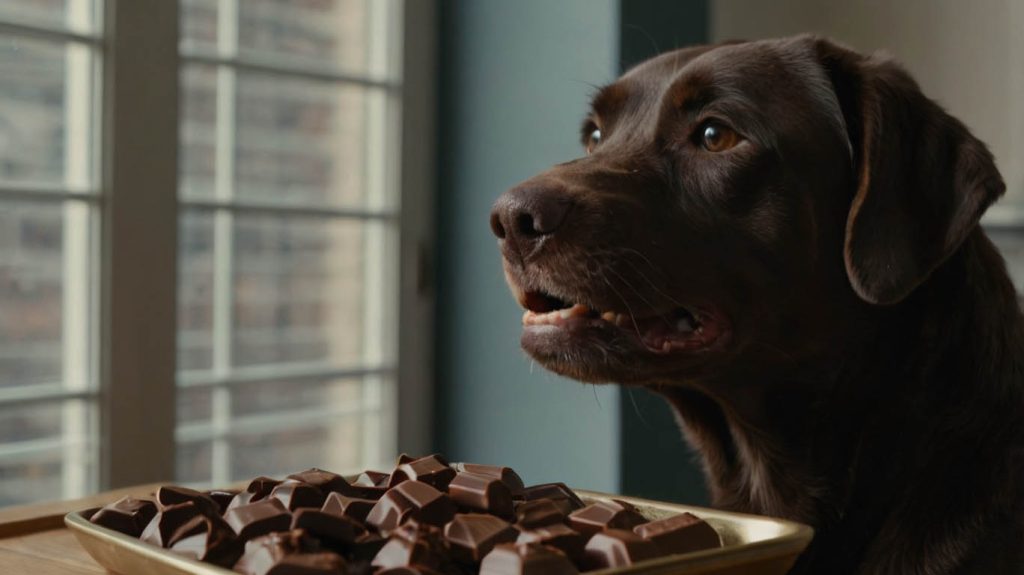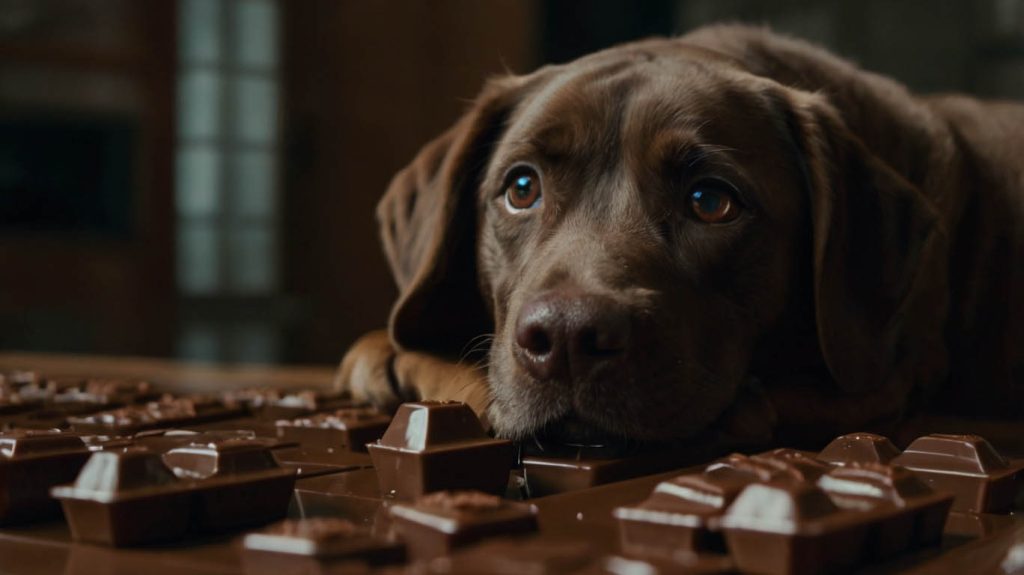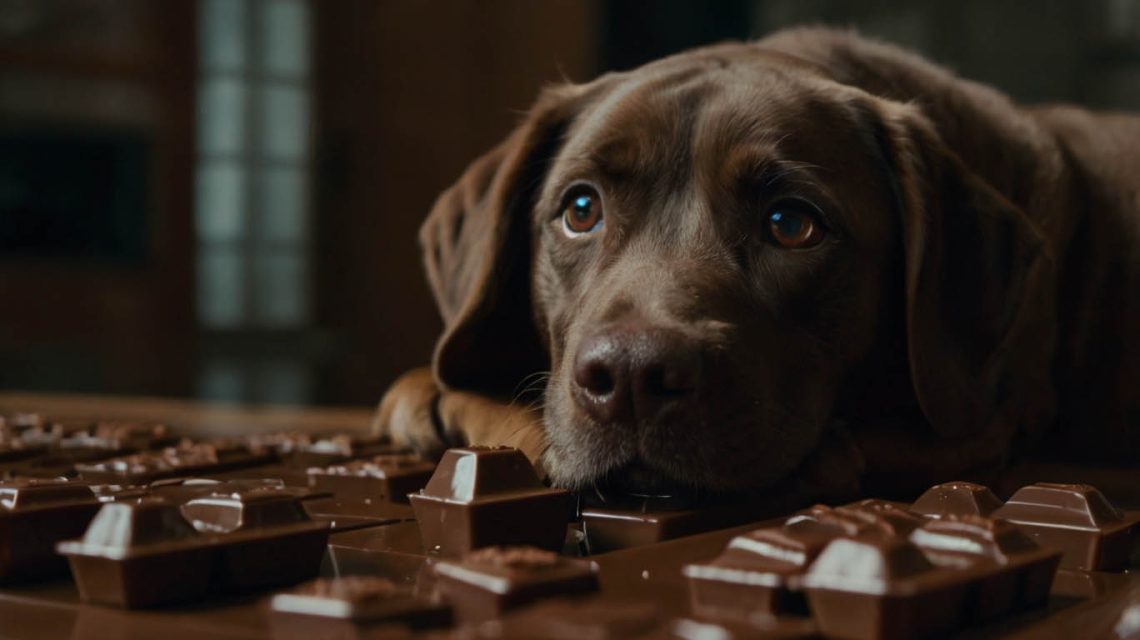What to Do If My Dog Eats Chocolate: An Emergency Action Plan for Owners
It’s a scenario that plays out in a horrifying flash. You step out of the room for just a minute, and when you return, you see it: a shredded candy bar wrapper on the floor and tell-tale brown smudges on your dog’s smiling face. Your heart instantly leaps into your throat. A wave of pure panic washes over you as you realize what has happened. Immediately, you grab your phone, your fingers fumbling as you type the most urgent question of the moment: what to do if my dog eats chocolate?
If this is happening to you right now, the most important thing is to take a deep breath and stay calm. Your quick, informed actions are your dog’s best defense. Therefore, this guide is designed to be your immediate, step-by-step emergency plan. We will walk you through exactly what to do, what information to gather, and why you must contact a professional immediately to ensure the best possible outcome for your beloved pet.
The Critical First Steps: What to Do If My Dog Eats Chocolate RIGHT NOW
Time is of the essence in a potential poisoning. Do not “wait and see” if your dog gets sick. Follow these steps in this exact order.
- Secure Your Dog and the Evidence: First, gently move your dog to a safe, confined area away from the scene. Then, immediately gather any remaining chocolate and the wrapper or packaging. This is crucial evidence.
- Gather Key Information: Before you call for help, you need three pieces of information:
- Your dog’s approximate weight.
- The type of chocolate they ate (e.g., milk chocolate, dark chocolate, baker’s chocolate).
- The amount of chocolate they ate. The wrapper is key here—was it a 4-ounce bar? A bag of chocolate chips? Estimate how much is missing.
- DO NOT Induce Vomiting Yourself: Unless you are a veterinary professional and have been explicitly told to do so, do not try to make your dog vomit at home using hydrogen peroxide or any other method. This can be dangerous and cause serious complications, like aspiration pneumonia.
- CALL FOR PROFESSIONAL HELP IMMEDIATELY. This is the most important step. You need to speak with a veterinarian or an animal poison control expert right away.
Emergency Contact Numbers:
- Your Veterinarian’s Office: This should be your first call.
- A Local 24/7 Animal Emergency Hospital.
- ASPCA Animal Poison Control Center: (888) 426-4435 (A consultation fee may apply)
- Pet Poison Helpline: (855) 764-7661 (A consultation fee may apply)

Understanding the Danger: Why Chocolate is Toxic
To appreciate the urgency, it helps to understand why chocolate is poisonous to dogs. The danger comes from two chemical compounds in the cacao bean, which is the primary ingredient in chocolate:
- Theobromine: This is the main toxin. Dogs cannot metabolize theobromine nearly as efficiently as humans can. This allows it to build up in their system to toxic levels.
- Caffeine: Chocolate also contains caffeine. Both theobromine and caffeine are stimulants that negatively affect a dog’s central nervous system and heart.
The answer to “what to do if my dog eats chocolate” is so urgent because these toxins can have severe effects on a dog’s body.
The Critical Factor: Not All Chocolate is Created Equal
The level of toxicity depends entirely on the type and amount of chocolate consumed relative to your dog’s size. This is why gathering the wrapper is so important.
Here is a general breakdown of chocolate types, from most to least toxic:
- Dry Cocoa Powder: The most toxic.
- Baker’s Chocolate (Unsweetened): Extremely toxic.
- Dark Chocolate (especially high cacao %): Highly toxic.
- Semi-Sweet Chocolate Chips: Moderately toxic.
- Milk Chocolate: Less toxic, but a large amount can still be very dangerous for a small dog.
- White Chocolate: Contains a negligible amount of theobromine. The primary concern here is the high fat and sugar content, which can cause pancreatitis or an upset stomach, but it is not a true toxicity risk.

Symptoms of Chocolate Poisoning: What to Watch For
If your dog has ingested a toxic amount, symptoms can begin to appear within 6 to 12 hours and can last for up to three days. Your quick action can prevent these from ever developing.
Mild Symptoms
- Vomiting
- Diarrhea
- Increased thirst and urination
- Restlessness or hyperactivity
Severe Symptoms
- Rapid heart rate
- Muscle tremors or twitching
- Seizures
- Heart arrhythmias (irregular heartbeat)
- In the most severe cases, heart failure
Knowing these signs is a key part of understanding what to do if my dog eats chocolate.
What to Expect at the Vet
If the vet or poison control determines that your dog has eaten a toxic amount, they will instruct you to bring your dog to the clinic immediately. Veterinary treatment may include:
- Inducing Vomiting: If the chocolate was eaten within the last couple of hours, the vet can safely make your dog vomit to remove the toxins from their stomach.
- Administering Activated Charcoal: This black, sludgy liquid binds to any toxins still in the digestive tract and prevents them from being absorbed into the body.
- IV Fluids and Supportive Care: Your dog may be put on an IV drip to help flush the toxins from their system and prevent dehydration. They will also receive any necessary medications to control symptoms like seizures or an irregular heartbeat.
Prevention: The Best Solution
The only thing better than knowing what to do if my dog eats chocolate is preventing it in the first place.
- Treat Chocolate Like a Poison: Store all chocolate, cocoa powder, and baked goods in high, secure cupboards that your dog cannot access.
- Educate Everyone in the Home: Make sure your family, especially children, and any guests understand that chocolate is dangerous for your dog and should never be left out or given as a treat.
- Be Vigilant During Holidays: Be extra careful during holidays like Halloween, Christmas, and Easter, when there is often a lot of candy in the house.
Your Calm and Quick Response is Key
That heart-stopping moment when you realize your dog has eaten chocolate is terrifying. But remember, you are their first responder. By staying calm, gathering the critical information, and making that immediate call for professional help, you can take control of the situation. You are your dog’s best advocate, and your quick action is their best chance for a full recovery.
Have you ever had a chocolate emergency with your dog? Share your story and what you learned in the comments below to help other owners be prepared.


